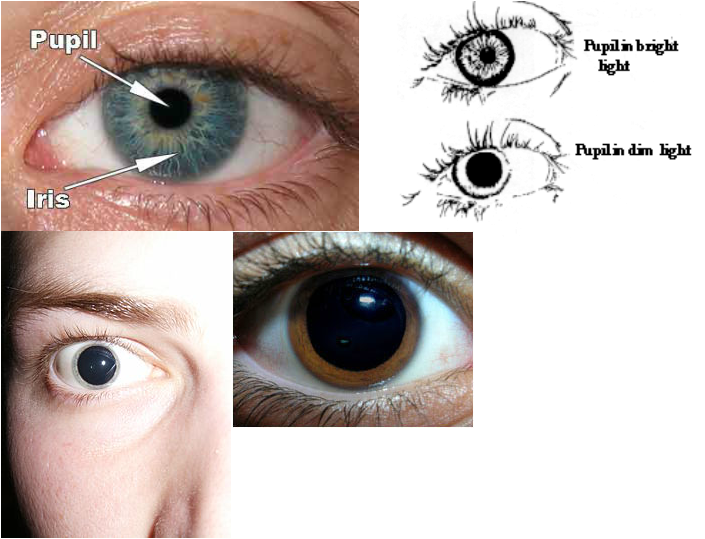
Light from any illuminated objects reflects off objects and travels in a straight line into the eye through the cornea and the pupil. The light travels through the lens, which focuses it on the back of the eye, projecting an upside-down image onto the retina.
The lens of the human eye

The purpose of the lens is to focus light onto the retina at the back of the eye. Because the lens refracts the light, the image which hits the retina is upside down.
The Retina

The retina contains millions of photoreceptors- sensory cells/organs that responds to light that falls onto it. There are two types of photoreceptors: Rods, which allow us to see in low light, and Cones, which allow us to see color and work best in brighter light.
The Iris and the Pupil

The iris is the colored part of the eye. Tiny muscles inside the iris control the amount of light which can enter the eye by opening and closing the hole in its center. The hole is called the pupil.
Light enters the eye through the pupil- the black hole in the center of the eye. The size of the pupil is controlled by the iris. When it is very bright and there is lots of light, the pupil is small. When it is dark, the pupil grows bigger to allow more light into the eye.
Light enters the eye through the pupil- the black hole in the center of the eye. The size of the pupil is controlled by the iris. When it is very bright and there is lots of light, the pupil is small. When it is dark, the pupil grows bigger to allow more light into the eye.


 RSS Feed
RSS Feed